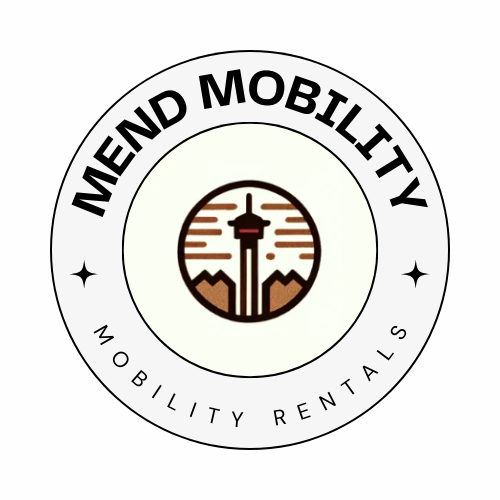After you put your cast or boot off and put the weight on your foot again, that's where the recovery really starts.
It's not the most fun journey and it will take time, but with the right tools and guidance from your physiotherapist, you will regain flexibility and strength in your ankle.
The key is to gently introduce exercises that encourage movement without causing strain. Below, we explore five essential tools that physiotherapists often recommend to help you on the road to recovery.
1. Resistance Bands
Resistance bands are one of the most commonly used tools in physical therapy. They provide gentle resistance, which helps strengthen and stretch your muscles without overexerting your ankle. They’re perfect for gradually improving flexibility and range of motion in the ankle after surgery.

How to use it:
Why physiotherapists recommend it:
Resistance bands are versatile and allow you to work on both flexibility and strength at your own pace. They come in different resistance levels, which makes them great for gradual progression.
Buy resistance bands: XtremeResistance Bands — Set of 6
2. Ankle Stretching Straps
Stretching straps are another fantastic tool to help regain ankle flexibility. These adjustable straps let you control how much you stretch, so you can slowly improve your range of motion without causing strain or pain.

How to use it:
Why physiotherapists recommend it:
Stretching straps help maintain control over the stretch, reducing the risk of injury. They’re perfect for people who need to be cautious and take things slowly during their recovery.
Buy ankle stretching straps: CTRL Sports Stretching Strap
3. Balance Board (Wobble Board)
A balance board is excellent for improving stability and ankle strength after surgery. This tool helps you regain control over your ankle movements, which is essential for everyday activities like walking, running, or simply standing.

How to use it:
Why physiotherapists recommend it:
Balance boards not only help regain flexibility but also rebuild strength in the ankle joint and improve proprioception, which is the body's ability to sense movement and position.
My opinion:
Even though it looks like a neat tool to use, I didn't have to courage to use it and wouldn't recommend it right after surgery. It's a bit too risky to lose the balance and step on your injured leg.
Buy the balance board: Professional Balance Board
4. Foam Roller
Foam rollers are a popular recovery tool for releasing tension in muscles and tendons around the ankle. Using a foam roller helps relieve tightness, increases blood flow, and improves flexibility in the surrounding muscles, speeding up the recovery process.

How to use it:
Why physiotherapists recommend it:
Foam rollers are an excellent tool for releasing muscle tension and improving mobility. By relaxing the muscles around the ankle, you can regain movement more easily and reduce stiffness.
Buy Foam Roller: TriggerPoint GRID Foam Roller
5. Slanted Board
A slanted board, also known as an incline board, is a simple but powerful tool for stretching and strengthening your ankle, calf, and Achilles tendon. By using the slanted surface, you can target and gently stretch the muscles and tendons in your lower leg, improving flexibility and mobility after surgery. It’s particularly helpful for preventing stiffness and promoting a smooth range of motion in your ankle.

How to use it:
- Stand on the slanted board with both feet, keeping your heels down and feeling a stretch in your calves and ankles.
- Hold the stretch for 20-30 seconds, then relax. Repeat a few times, increasing the incline over time as your flexibility improves.
- For added intensity, try stretching one foot at a time or shifting your weight slightly forward.
Why physiotherapists recommend it:
The slanted board is a great tool for safely increasing ankle flexibility and releasing tension in the lower leg. It provides a controlled stretch, reducing the risk of injury while helping you regain strength and mobility. It's an effective and gentle way to support your post-surgery recover
Buy Slant Board: StrongTek Professional Wooden Slant Board
6. Bosu Ball
The Bosu Ball is a half-dome exercise tool that helps with balance, strength, and flexibility. It’s great for recovering ankle stability and increasing flexibility after surgery. By standing on the dome’s unstable surface, you challenge your muscles to work harder, improving your balance and control.

How to use it:
Why physiotherapists recommend it:
The Bosu Ball is perfect for improving both balance and ankle flexibility simultaneously. It challenges your stabilizer muscles and helps you regain confidence in your movements as you recover from surgery.
Buy Bosu Ball: Bosu Multi Functional Strength Trainer
7. ProStretch Calf Stretcher
The ProStretch Calf Stretcher is specifically designed to stretch your calf muscles and Achilles tendon, which can become tight after ankle surgery. It’s a simple yet effective tool for improving flexibility in your ankle and lower leg, reducing stiffness and increasing your range of motion.

How to use it:
Why physiotherapists recommend it:
The ProStretch Calf Stretcher is highly effective for targeting tight calf muscles and tendons. It helps improve ankle flexibility and mobility, making it easier to walk and move comfortably post-surgery.
What I'd Personally Recommend
I'm not a physiotherapist but when I was recovering from a broken angle the most useful tools were:
- Bosu Ball - for getting back strength in the ankle
- ProStretch Calf Stretcher - relatively inexpensive and simple tool to use even when sitting
- Slanted Board - great way to regain the dorsiflexion and it's useful even post total recovery.
With these three tools I am able to perform back and front squats with a barbell again. I've already had a foam roller but was terrible with reminding myself to use.
Hope this helps!
Dejan

